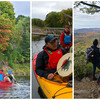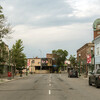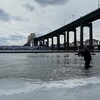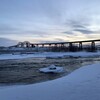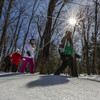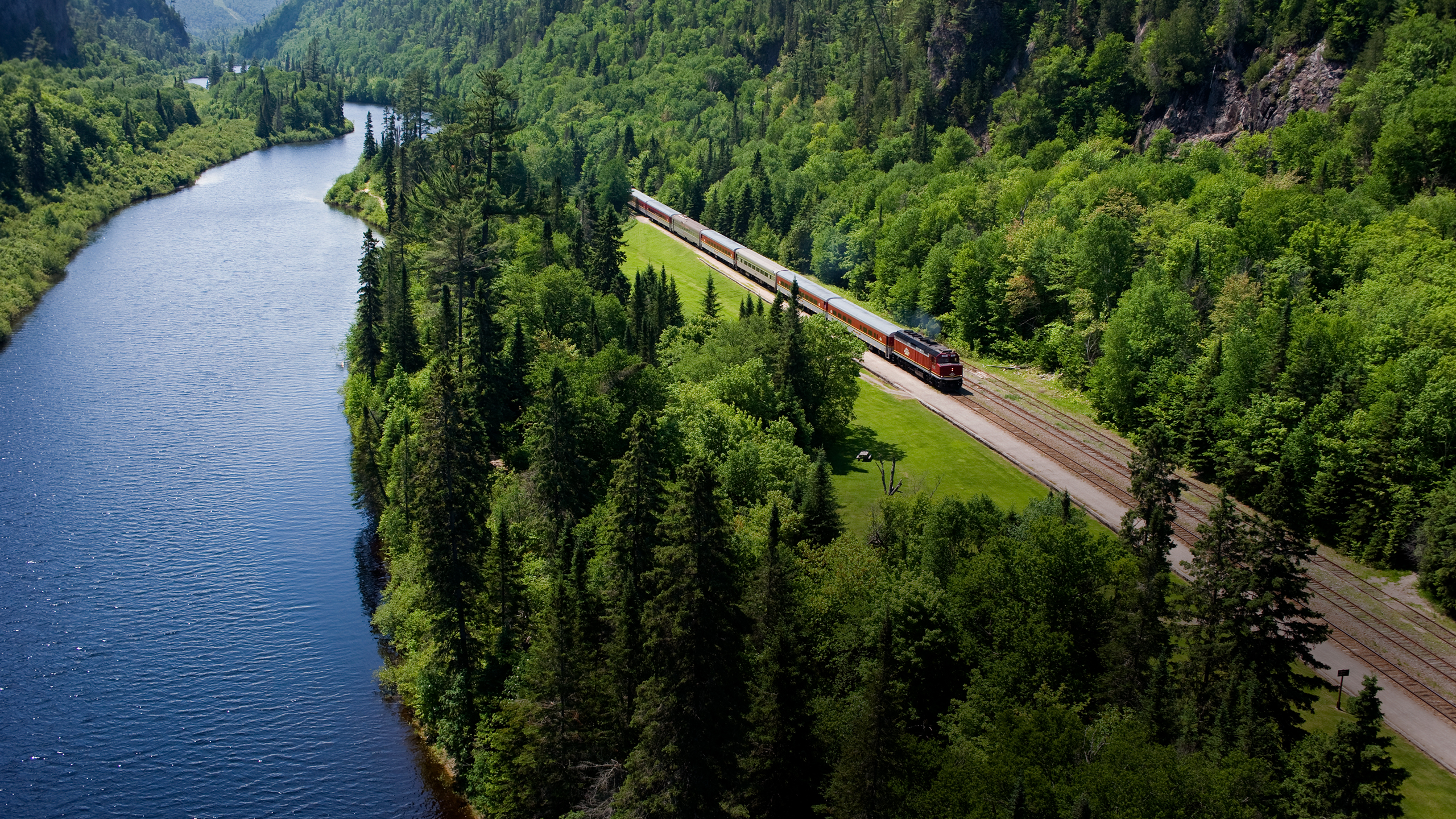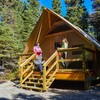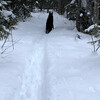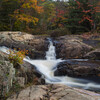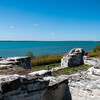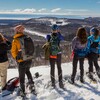
Ice Hiking in Gros Cap
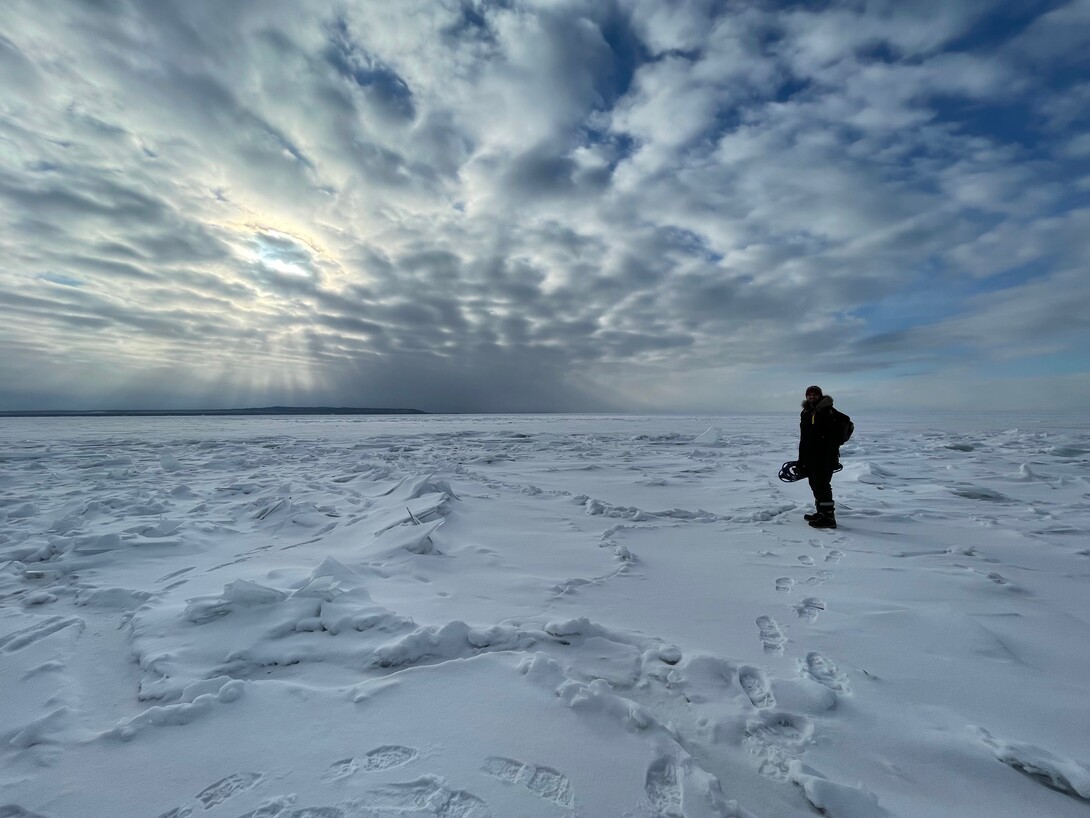
Disclaimer: Ice Cave exploration is an inherently risky activity that occurs in an unmaintained natural setting. Visitors are encouraged to plan accordingly, utilize the expertise of a local guide, and visit at their own risk.
Travelling down the winding road to Gros Cap Conservation Area, near the city of Sault Ste. Marie, Ontario, the great lake suddenly appears in the distance. Winter is well underway, and the frigid skeletons of the tall hardwoods lining the path provide a fractured view of the water that just a few months earlier would have been shielded by lush vegetation.
The anticipation grows until you reach a roundabout—the final visual obstacle before coming to a stop at the shore’s edge. At last, you can take in the frozen expanse of Lake Superior in its entirety.
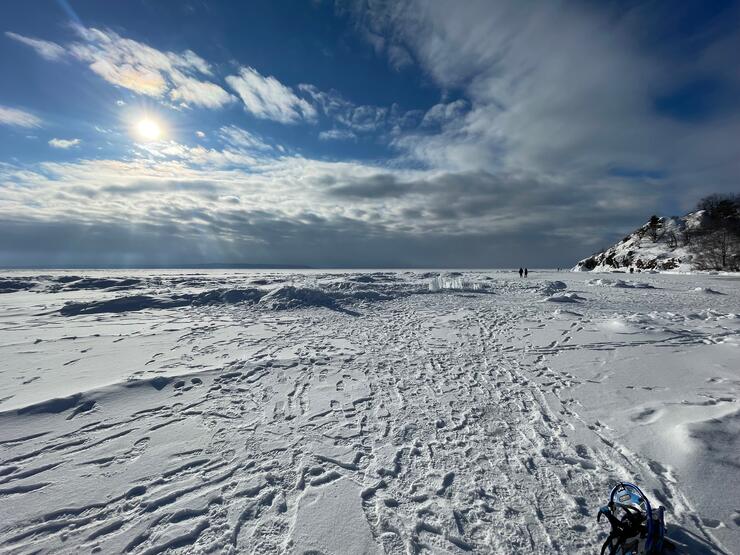
How to reach lake superior
Located at the end of Second Line West in Prince Township, the Gros Cap Bluffs consist of large crags that stand tall, overlooking Lake Superior. To the locals, it is a well-known spot with incredible scenic views and winding trails, even connecting to the Voyageur (a Northern Ontario system of trails that run from Sudbury to Thunder Bay).
But the cold weather brings with it a different point of view which can only be enjoyed at this time of year. The frozen lake offers new passageways offering unique sights and hidden nooks that would be too treacherous to reach when the waves are crashing against the rock face.
A parking lot borders the shoreline, bringing you directly to the lake as you exit the vehicle. A small path leads onto the ice from where you can start your exploration. (Be sure to hold on to any garbage or belongings as there are no trash cans on the premises. Others want to enjoy the pristine sights as well!)
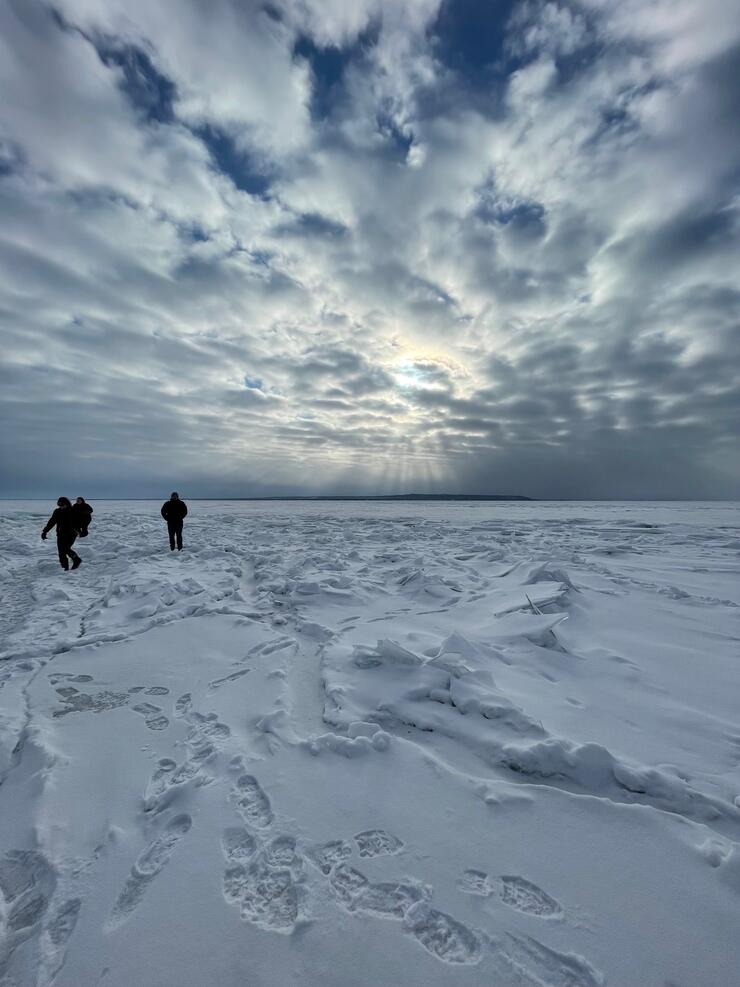
Safety first
One of the best ways to ensure a safe ice hike is to engage the services of a knowledgeable local guide. Generally speaking, once there is a minimum average of 4 inches of ice it is safe to walk on. It’s a good rule of thumb to wait until mid-January to ensure the ice has had time to freeze to an appropriate depth. At this location, the locals will likely have gone walking on the ice and there will be many footprints and trails that you can follow. Snowshoes aren’t necessary, but some might find it less slippery with them on.
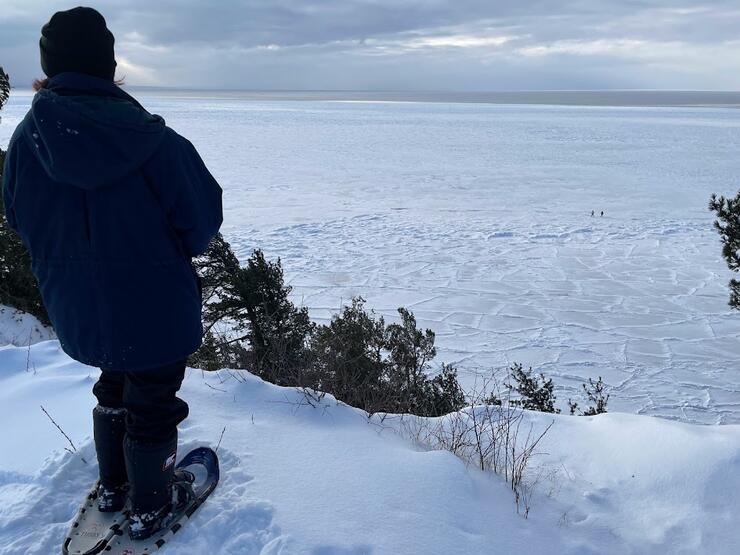
It’s important to be wary of snow-covered ice as you can’t know if it’s fully frozen underneath, so proceed with caution regardless. Normally, depending on the weather, the lake should remain safely frozen until late February.
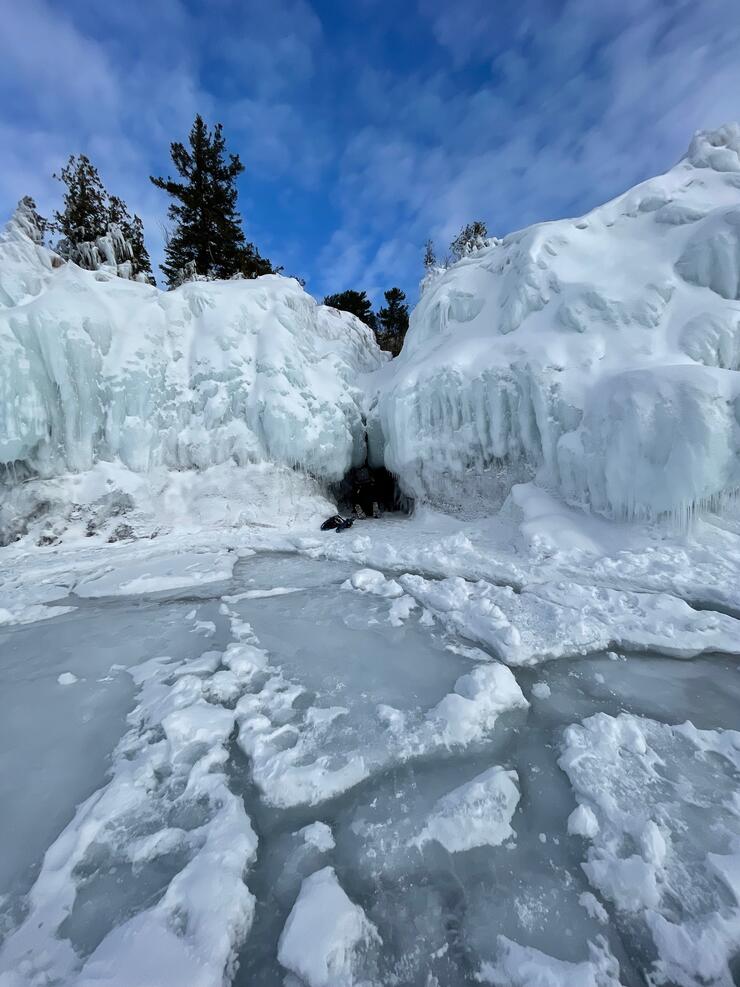
Winter 2022 proved to be a particularly cold one with temperatures well below freezing. The lake this winter season should remain safely frozen until late March. Make sure to dress for the weather with plenty of warm layers. Always tell someone where you are going and what time you plan to be home.
Let the exploration begin
To the left, a dock entombed in ice holds fast against the beating of the wind and snow. In the distance, an ice fishing hut might stand out against the blinding white, a perfect example of human determination (blistering cold winds won’t deter us from spending time outdoors). On the opposing shore, 6 km across, lies the state of Michigan.
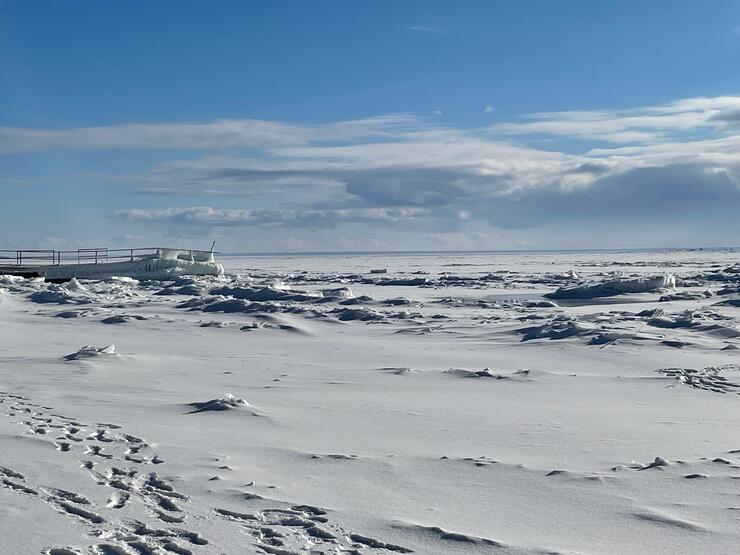
Lake Superior is a force to be reckoned with, with winds creating waves of up to 30 feet in height in some cases. As the water freezes, thaws, and freezes again, plates of ice are formed and pushed together, creating a landscape of jagged peaks. Locals usually use these plates to create works of art. Inukshuks and neat designs play with light and shadow like stained glass.
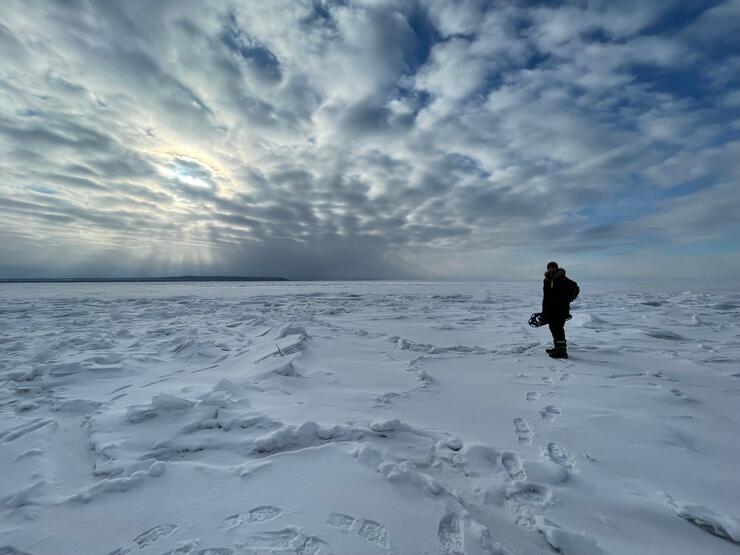
As you walk along the edge of the cliffs, you get a chance to see how the wind and water have come together to form incredible natural formations—rock glazed over with ice and enormous icicles cascading down the cliff sides. It is mesmerizing to get up close and observe the tenacious lichens that cling to the bluffs in a spray of colour, forever exposed to the elements and hardened to endure the weather.
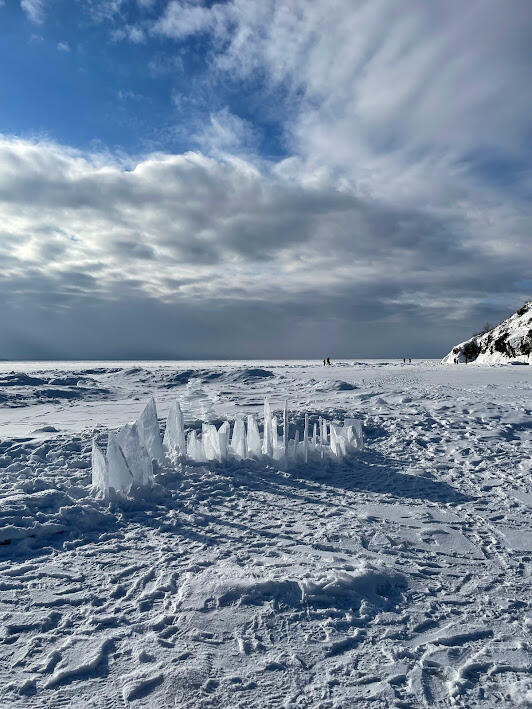
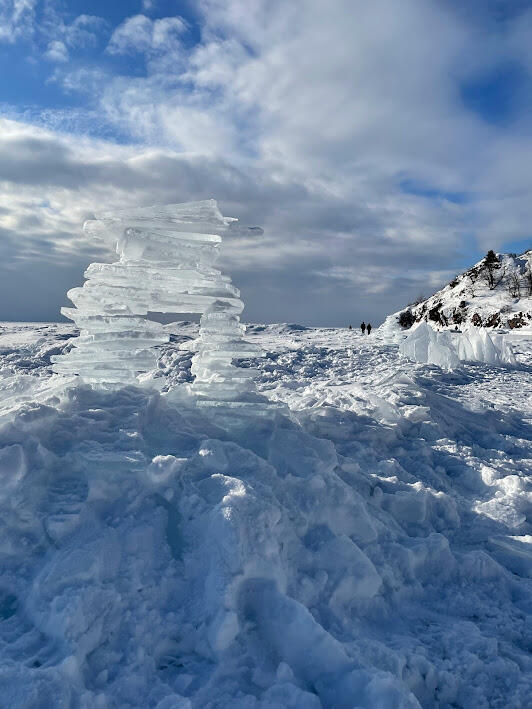
Passages that were only accessible from the trails can now be accessed from the ice. One particular spot provides a gorgeous view of the lake framed by ice-laden walls from within a small enclave of cedar trees. This can be found by following the curve of the bluffs while out on the water.
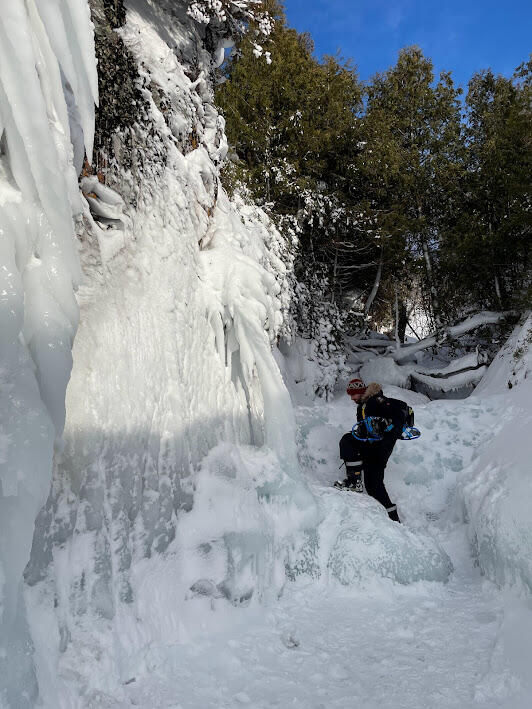
Cave-like structures form along the shoreline and against the protruding rocks. Take extreme caution when observing and it is best not to enter, as some of the caves may have open water. Keeping a few feet away and moving tentatively will do the trick.
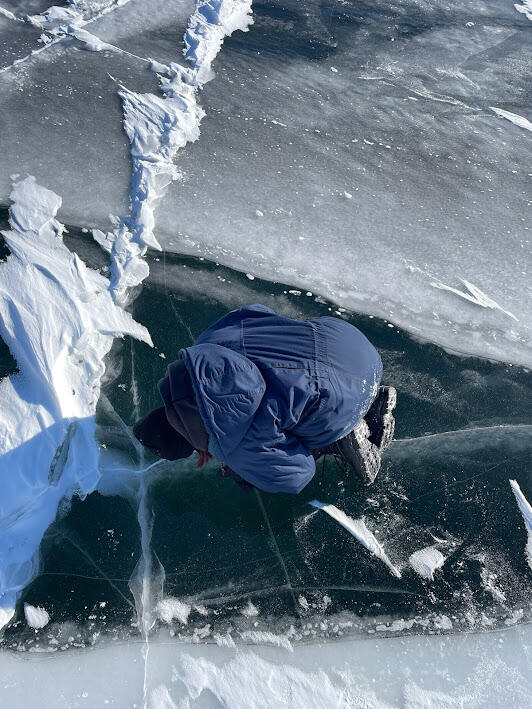
For the uninitiated, looking out and seeing a sea of white is a unique experience. Find a spot amongst the ice formations. Some create natural benches and tables on which to set up a portable propane burner and have tea right on the lake! You’ll have a front-row seat for one of the many incredible sights Northern Ontario has to offer.

Magical nighttime viewing

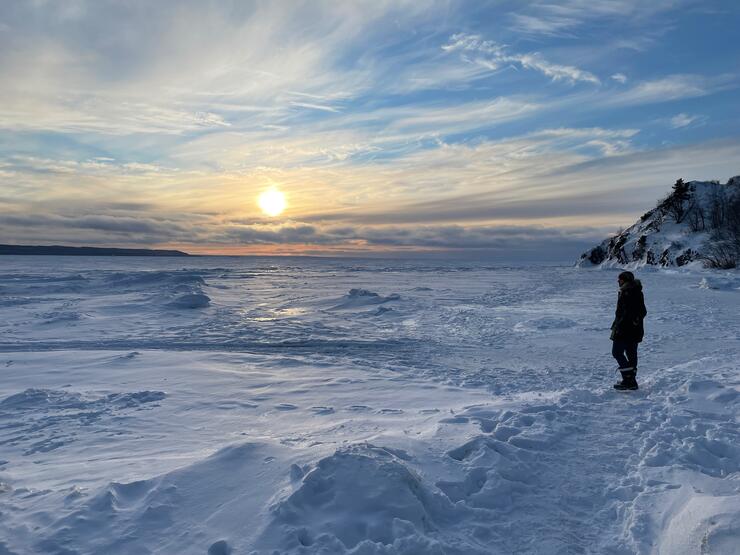
As the sun begins to set, if you are lucky, the wide-open sky could be streaked with intense reds and oranges, reflecting off the ice and the snow-capped cliffs in a soft pink haze. You look back at the darkening sky and see the moon slowly taking over the sky.
Once the sun is set, the light will linger on for at least another hour and you can stay to watch dusk turn into night. When the wind is still, you can hear the lake bubbling under creaking ice in an eerie chorus that reminds you of the great depths beneath. But Lake Superior won’t thaw for another few weeks, weather permitting, so bring a warm drink and enjoy the glint of moonlight scattered across the ice like many stars.
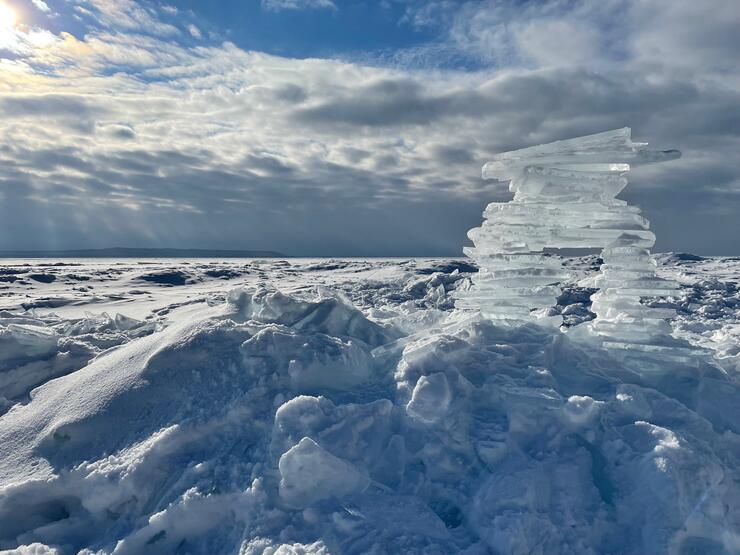
Gros Cap Conservation Area is private land with beautiful and unique vegetation. Be mindful of private property signage and proceed with caution when on established trails so as to not disturb any vegetation. For more information on publicly available trails, visit Sault Ste. Marie Region Conservation Authority website.

For more information on planning your trip to Sault Ste. Marie visit Sault Tourism.
Recommended Articles

9 Facts to Know about the Agawa Canyon Tour Train
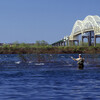
A Guide to the Best Urban Fishing in Sault Ste. Marie, Ontario

Where to Eat, Dine, and Play on the Sault Ste. Marie Waterfront

Cruising to the Next Level

Canada's Only Bushplane Museum is a Must For Your Bucket List

Why the Fall Is a Great Time to Visit Sault Ste. Marie
Canoe & Kayak Sault Ste. Marie

Peace Restaurant
